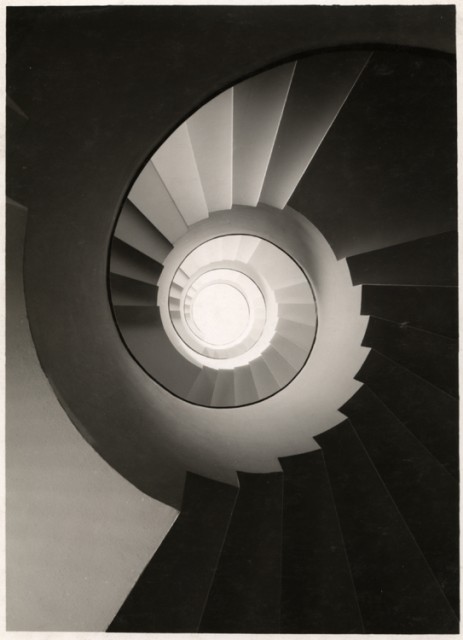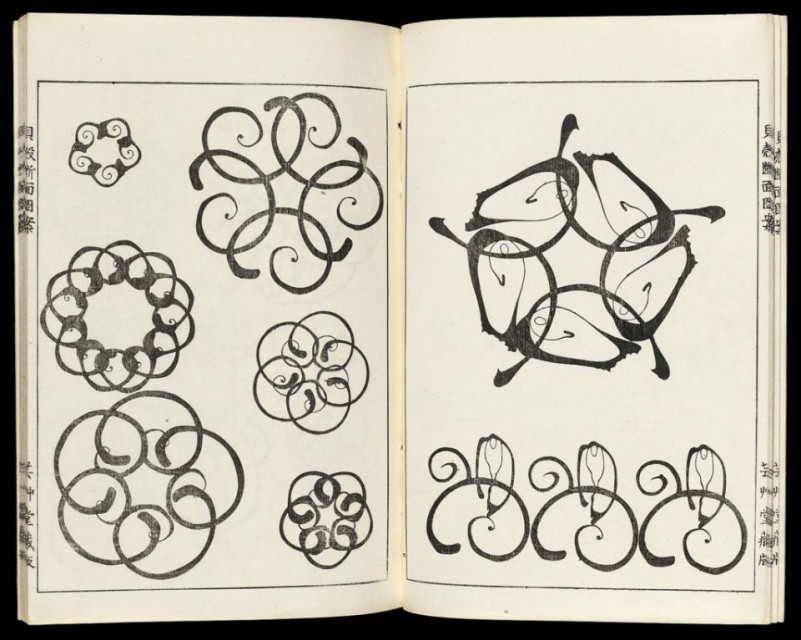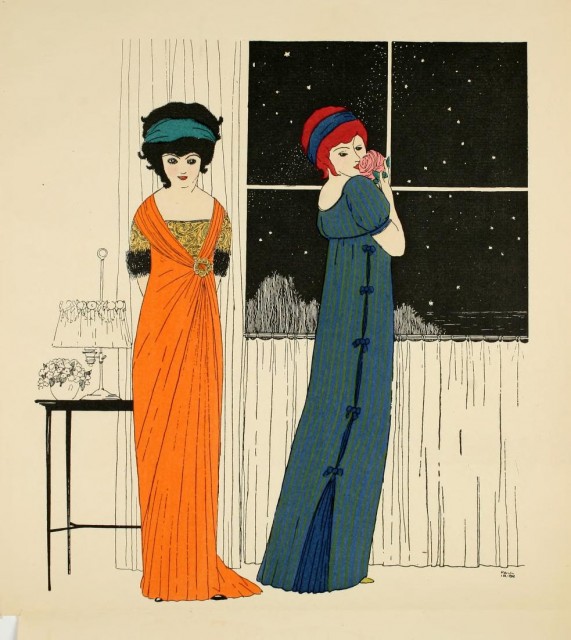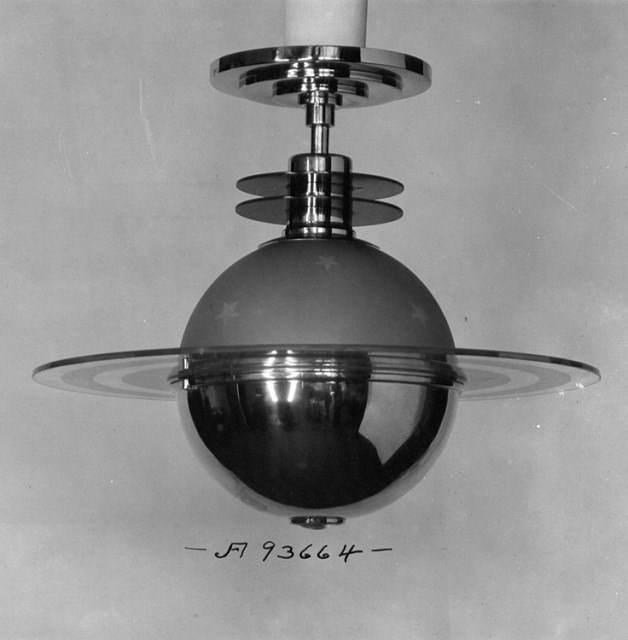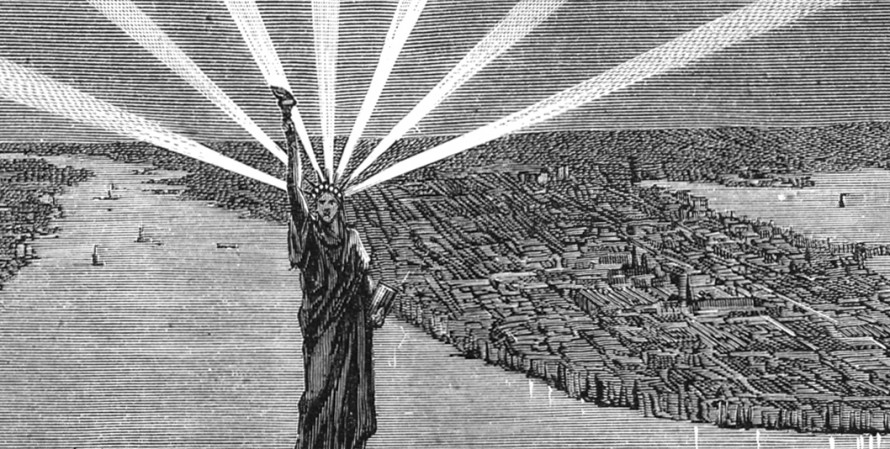Upon first glance it is difficult to tell if we are looking up or down this spiral staircase. Clean lines intersect with natural light, casting shadows that create a deceptive flattening effect from this vantage point. What appear to be stairs descending counterclockwise with no railing is actually the underside of the staircase designed to...
Patterns found in nature have influenced human creativity for millennia and continue to inspire designers today. Can you guess what natural forms were used to create the designs in this pattern book? Published in Kyoto by Unsōdō in 1913, its bold calligraphic lines, sweeping curves, and organic forms share characteristics with both Japan’s Rinpa and...
This fashion plate from Les Robes De Paul Poiret (1908) is one of eleven illustrations often credited with liberating women from the body constricting corsets popular during the Victorian and Edwardian eras (1837-1910). Dress reformers had advocated for classical-style high waistlines as early as the 1880s, but it was Poiret’s beautifully commissioned album that most...
This black and white photograph represents just one of 37,000 from the National Design Library’s Caldwell & Company Collection. Also containing 13,000 original drawings and watercolor sketches, this immense visual resource comprises one of the largest lighting fixture archives by a single American company. The library has digitized a large portion of this collection which...
To celebrate the Statue of Liberty’s 126th birthday, we’ve pulled together some of her baby pictures. These earliest images of Lady Liberty, from our National Design Library’s George A. Kubler Collection, depict her before her dedication in 1886 on Bedloe’s Island—now Liberty Island. You might notice a few differences from the statue we know today,...
